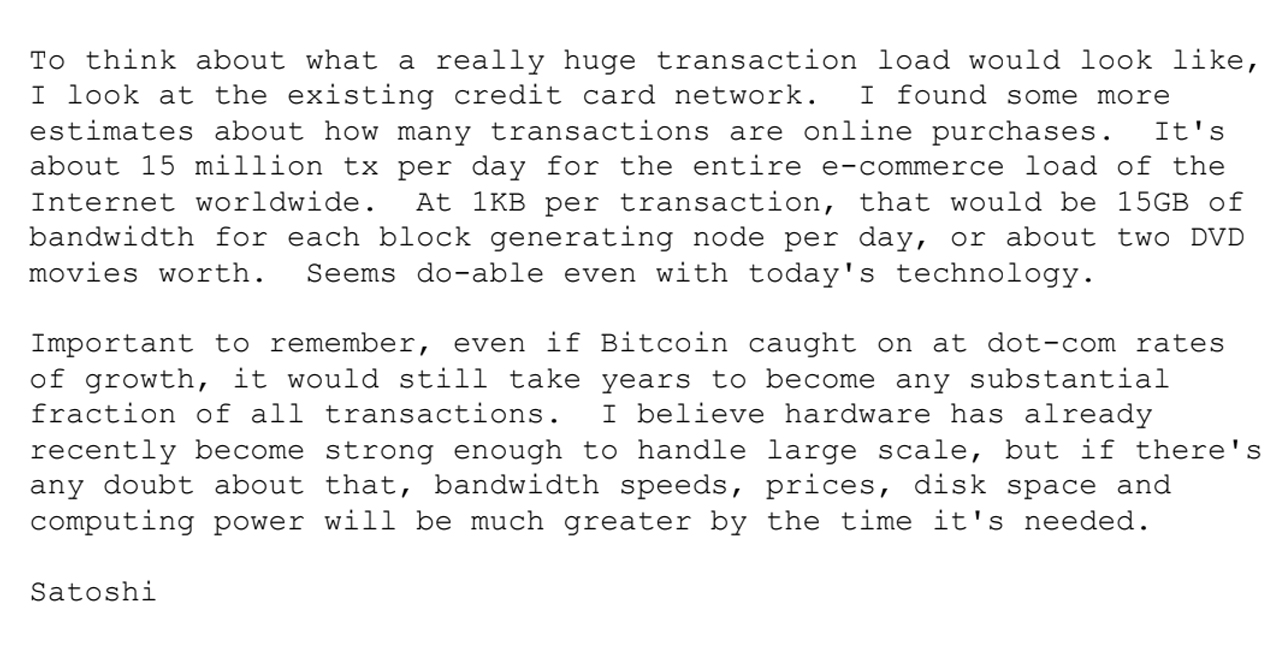Satoshi Nakamoto to Martti Malmi: The Correspondence That Shaped Bitcoin's Early Days
In a series of insightful emails between Martti Malmi and Satoshi Nakamoto, the foundational discussions shaping the early development of Bitcoin are revealed. These exchanges offer a rare glimpse into the critical thinking and technical challenges overcome in the cryptocurrency’s infancy.
Blueprints of a Digital Revolution: Nakamoto’s Conversations With Sirius
The dialogue initiated in May 2009 marks a pivotal moment in cryptocurrency history. Satoshi Nakamoto commends Martti ‘Sirius’ Malmi‘s grasp of Bitcoin, highlighting the initial skepticism and resistance from the broader community. Their discourse underscores the challenges of introducing a revolutionary digital currency in an era dominated by traditional fiat and a generalized distrust of non-tangible assets. Nakamoto further anticipated Bitcoin’s energy demands but believed they would be lower compared to the existing fiat system.
“Ironic if we end up having to choose between economic liberty and conservation,” Satoshi wrote to Malmi in one email exchange. “Unfortunately, proof-of-work is the only solution I’ve found to make P2P e-cash work without a trusted third party. Even if I wasn’t using it secondarily as a way to allocate the initial distribution of currency, PoW is fundamental to coordinating the network and preventing double-spending.”
Bitcoin’s creator added:
If it did grow to consume significant energy, I think it would still be less wasteful than the labour and resource-intensive conventional banking activity it would replace. The cost would be an order of magnitude less than the billions in banking fees that pay for all those brick-and-mortar buildings, skyscrapers, and junk mail credit card offers.
Nakamoto’s request for Malmi’s assistance with website writing and FAQ development is a testament to the collaborative spirit that defined Bitcoin’s early days. This effort to educate potential users and developers alike on Bitcoin’s principles and operations was crucial for its adoption and understanding, emphasizing the importance of clear communication and community engagement in tech innovation. In one particular email, Nakamoto discloses that after months of work on Bitcoin, the inventor was growing weary.
“I’m not going to be much help right now either, pretty busy with work, and need a break from it after 18 months development,” Satoshi said and further noted that Hal Finney was not actively involved at the time.
The technical insights shared by Nakamoto in the Malmi emails are profound. From the implementation of server-side scripting interfaces to the strategic importance of running nodes that accept incoming connections, Nakamoto’s guidance reflects a deep understanding of the technical infrastructure necessary for Bitcoin’s success. “There is only one global chain,” Satoshi stated to the young developer. “The existing Visa credit card network processes about 15 million Internet purchases per day worldwide. Bitcoin can already scale much larger than that with existing hardware for a fraction of the cost. It never really hits a scale ceiling. If you’re interested, I can go over the ways it would cope with extreme size. By Moore’s Law, we can expect hardware speed to be 10 times faster in 5 years and 100 times faster in 10. Even if Bitcoin grows at crazy adoption rates, I think computer speeds will stay ahead of the number of transactions,” Nakamoto added.
“There is only one global chain,” Satoshi stated to the young developer. “The existing Visa credit card network processes about 15 million Internet purchases per day worldwide. Bitcoin can already scale much larger than that with existing hardware for a fraction of the cost. It never really hits a scale ceiling. If you’re interested, I can go over the ways it would cope with extreme size. By Moore’s Law, we can expect hardware speed to be 10 times faster in 5 years and 100 times faster in 10. Even if Bitcoin grows at crazy adoption rates, I think computer speeds will stay ahead of the number of transactions,” Nakamoto added.
These technical directives not only solved immediate operational challenges but also laid the groundwork for Bitcoin’s scalability and security. In one particular email, Nakamoto praised Gavin Andresen’s work. “I trust him, he’s responsible, professional, and technically much more Linux capable than me,” Bitcoin’s inventor wrote at the time.
21 Million Described as an ‘Educated Guess’
Malmi’s proactive engagement and suggestions, such as developing a UI tool for creating password-protected private keys, further illustrate the dynamic exchange of ideas that fueled Bitcoin’s early development. A particularly intriguing aspect of their correspondence is the discussion on Bitcoin’s social contract and the principles of confiscation resistance, censorship resistance, inflation resistance, and counterfeit resistance.
“My choice for the number of coins and distribution schedule was an educated guess,” Nakamoto told Malmi. “It was a difficult choice, because once the network is going it’s locked in and we’re stuck with it. I wanted to pick something that would make prices similar to existing currencies, but without knowing the future, that’s very hard,” Bitcoin’s creator added. “I ended up picking something in the middle. If Bitcoin remains a small niche, it’ll be worth less per unit than existing currencies. If you imagine it being used for some fraction of world commerce, then there’s only going to be 21 million coins for the whole world, so it would be worth much more per unit.”
New satoshi email release is staggering in terms of clues regarding their identity plus new info on how they thought about bitcoin. Very significant
— nic 🌠 op_cat-er (@nic__carter) February 23, 2024
The email exchanges also delve into technical explanations of Bitcoin’s functionality, such as the block generation process, the handling of transactions, and the system’s inherent security measures. Nakamoto’s detailed explanations to Malmi’s queries provide invaluable insights into the thought process behind Bitcoin’s design choices, emphasizing the importance of security, decentralization, and user autonomy. Malmi’s emails are one of the largest archives of Nakamoto writings to date since the prior database of Satoshi archives. Excerpt from the emails between Nakamoto and Sirius.
Excerpt from the emails between Nakamoto and Sirius.
Reflecting on these conversations, it’s evident that the dialogue between Malmi and Nakamoto was not just technical but also visionary, contemplating the future impact and challenges of Bitcoin. Discussions on scaling, adoption rates, and the potential for Bitcoin to replace traditional banking highlight its creators’ ambitious vision, even in the face of uncertainty and technical hurdles. Nakamoto also touched on Liberty Reserve, an early BTC exchange that facilitated fiat to bitcoin transactions, which the U.S. government eventually closed down. Bitcoin’s creator highlighted Liberty Reserve’s privacy and the absence of KYC protocols.
“You could always exchange for Liberty Reserve,” Nakamoto suggested in one email exchange. “It’s an online currency similar to e-Bullion, Pecuix, or Webmoney that allows exchanges [with] no questions asked and with privacy. L and the others are hard to buy but easy to cash out. Hard to buy because exchangers are very cautious about getting ripped off by reversed payments, so they require more details and holding time. Cashing out is very easy. L is non-reversible, so there are oodles of exchanges eager to turn I into any kind of payment,” Nakamoto concluded.
What do you think about the trove of emails Malmi dumped on Friday? What do you think about the insights Satoshi shares in these emails? Share your thoughts and opinions about this subject in the comments section below.

















































